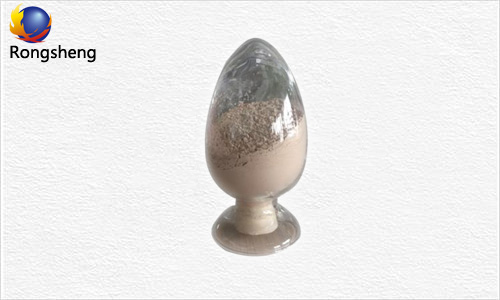High temperature Refractory mortar Description
High temperature refractory mortar is joint material for the masonry of refractory bricks. It can also be used as coating material to make the masonry flat and integral. Refractory mortar are divided into two categories, one is slurry shape material, stored in buckets and can be used for lining firebricks directly. The other is dry form refractory mortar packed in bags and should be mixed by water or liquid binders before using. No matter what forms refractory mortar appears, the main compositions are refractory powders, binders and additives( dispersant, plasticizer, stabilizer, water retaining agent).
As known to all, joint material and firebricks to be lined should have similar high temperature performances, so the lining will have the best integrity. Therefore, corresponding high temperature refractory mortar should be adopted for lining different kinds of refractory bricks. By chemical composition, refractory mortar is classified into: silica mortar, magnesia mortar, fireclay mortar, high alumina mortar, corundum mortar, silicon carbide mortar, corundum mortar, magnesia chromite mortar, etc. Refractory mortar binders include water and liquid chemical binders, i.e., hydrous binders, and liquid organic binders, i.e., non-hydrous binders.
Silica Mortar
Silica refractory mortar has similar properties to silica bricks, it is mainly used to mason silica bricks. Just like silica bricks applied in different thermal equipment have different SiO2 content and different refractoriness, silica mortar is also divided into hot blast furnace silia mortar, coke furnace carbonization chamber silica mortar, glass kiln silica mortar.
Silica Refractory Mortar Physicochemical Indexes
| Item |
Hot blast furnace |
Coke furnace carbonization chamber |
Glass kiln |
| Refractoriness℃ ≥ |
1690 |
1670 |
1710 |
| Cold compression strength (1400℃,3h) MPa ≥ |
3.0 |
3.0 |
3.0 |
| cementation time/ min |
1-2 |
1-2 |
1-2 |
| Granularity ≥0.5mm % |
>1 |
<3 |
<2 |
| SiO2% |
94 |
92 |
96 |
| Fe2O3 % < |
1.0 |
-- |
0.7 |
| 0.2 Mpa rupture under load temperature ℃ > |
1600 |
1500 |
1620 |
High temperature alkaline refractory mortar
Alkaline refractory mortar is specially designed for the masonry of alkaline refractory bricks, for example, magnesia bricks, magnesia alumina bricks, magnesia chrome bricks, dolomite bricks, etc. hydrous binders can be used to make alkaline refractory mortars, as water can react with MgO and form Mg(OH)2, which is to stable at high temperature.Usually used alkaline refractory mortar includes: magnesia mortar, magnesia alumina mortar, magnesia chrome mortar, etc.
Aluminum Silicate Mortar
Aluminum silicate refractory mortar is the general name of fireclay mortar, mullite mortar and high alumina mortar. Usually, silicate binder and phosphate binders are used for the preparation of aluminum silicate mortar. Fireclay mortar is mainly used to line, clay bricks, mullite mortar is usually used to line mullite bricks and corundum mullite bricks, high alumina mortar is used to line high alumina bricks.
Aluminum silicate mortar Physiochemical Index
| Item |
Clay mortar |
High alumina mortar |
Mullite mortar |
Corundum mortar |
| Refractoriness℃ ≥ |
1750 |
1790 |
1790 |
1850 |
| Rupture strength (Sintered) MPa ≥ |
5.9 (1200℃) |
5.9 (1400℃) |
5.9 (1500℃) |
5.9 (1500℃) |
| cementation time/ min |
1-2 |
1-2 |
1-2 |
1-2 |
| Granularity ≥0.5mm % |
≤1 |
≤1 |
≤1 |
≤1 |
| Al2O3 % ≥ |
45 |
70 |
70 |
90 |
| rupture under load temperature ℃ ≥ |
1200 |
1300 |
1500 |
1700 |
Silicon carbide mortar / carbon mortar
Silicon carbide mortar is joints material used to line silicon carbide bricks or SiC containing products. Carbon mortar or carbon containing mortar is used to line large blast furnace and middle blast furnace carbon bricks, iron mixing furnace or torpedo tank alumina carbon brick. Bulky joint carbon mortar and thin joint carbon mortar can be selected for different applications.

